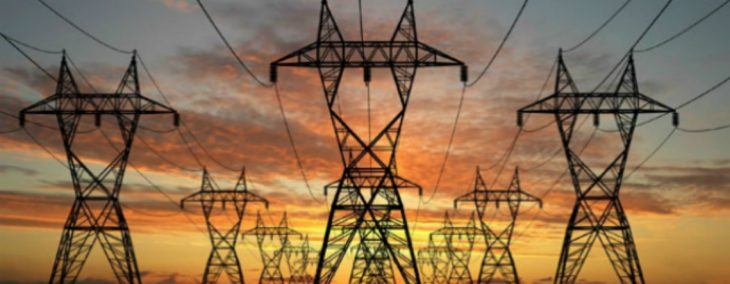Residential electricity prices may decline for first time since 2002, Arkansas power prices 7th lowest in nation
by October 10, 2016 7:49 pm 272 views

As natural gas has overtaken coal as the nation’s major source of energy for power generation, U.S. residential electricity prices are forecasted in 2016 to decline for the first time in nearly 15 years, according to new data from the U.S. Energy Information Administration (EIA).
During the first six months of 2016, residential customers paid on average 12.4 cents per kilowatt-hour (kWh), or 0.7% lower than the same period last year. If this trend continues for the rest of 2016, annual average residential electricity prices would decline for the first time since 2002, the EIA said.
In the West South Central regional, which includes Arkansas, Louisiana, Oklahoma and Texas, residential electricity prices are averaging just over 10 cents per KWh and are down 4% over the past year. In 2015, Arkansas had the nation’s seventh lowest average electricity prices at about 8.15 cents paid per KWh.
Over the past five years, nominal residential prices have increased an average of 1.9% annually, about the same rate as overall inflation. Residential customers in most areas of the country are seeing lower retail electricity prices this year compared with the same time last year.
Declining costs of fuel, especially natural gas, have been a key driver of recent reductions in retail electricity prices, the EIA said. Over the first six months of 2016, the weighted average cost of natural gas delivered to electricity generators was $2.58 per million Btu, 28% lower than in the first half of 2015.
The nation’s largest energy trade group, the American Petroleum Institute, cited the EIA report and said American consumers are benefiting from lower electricity costs due to clean and abundant natural gas.
“EIA’s latest report on electricity prices shows that American consumers are benefiting from clean, abundant natural gas,” said API Executive Vice President Louis Finkel. “Due to advancements in hydraulic fracturing and horizontal drilling, the United States has become the number one producer of oil and natural gas in the world and the market has increasingly adopted natural gas for electricity generation. As a result, we are also the world leader in reducing carbon emissions, which are near 20-year lows. This is a win-win thanks in large part to American innovation and free markets.”
Besides the API, several U.S. utilities are also making consumers aware of the lowest electricity prices they’ve seen in years. Consumers Energy, the largest utility in Michigan, said Monday (Oct. 10) that its customers’ upcoming winter bills will be $200 less than five years ago.
“The price that our customers will pay for natural gas this winter is 65 percent lower than in 2006, which leaves employers and households with more money to spend elsewhere,” said Tim Sparks, Consumers Energy’s vice president of energy supply operations.
Consumers Energy, which announced in March that it was retiring seven coal plants and transitioning to cleaner energy sources, also said its customers have seen a dramatic decline in the natural gas price they pay. That price has fallen by 36 cents – or 10% – from a year ago for every thousand cubic feet of natural gas, the Michigan utility giant said.
The latest EIA data is culled from average residential electricity prices by the Census Bureau’s nine divisions split by four regions (Northeast, Midwest, South and West). And despite rosy price fundamentals for the retail side of the natural gas industry, EIA officials said not all recent declines in electricity prices can be attributed to developments in natural gas markets.
For example, Hawaii consistently has the highest electricity prices in the U.S., averaging 24 cents/kWh so far in 2016. Many of the utility-scale generating units in Hawaii are fueled by petroleum, and the falling cost of crude oil has contributed to a 12% decline in retail electricity prices so far in 2016. In addition, Hawaii’s electricity system has been shifting toward increased adoption of rooftop solar, with the ultimate goal of providing 100% of its electricity from renewable sources by 2045.
Also, despite the decline in national average residential electricity prices in the first half of 2016, prices are rising in some states and regions. On average, residents of the contiguous Pacific Coast states (California, Oregon, and Washington) so far in 2016 are paying 3% higher prices than in the first six months of 2015.
The regulated electric utilities in these states sought permission to increase rates to cover costs of maintaining and upgrading the region’s power transmission grid and its network of natural gas pipelines. Midwest residential customers have also experienced increasing electricity prices, with year-to-date rates increasing by 2% and 3% in the East North Central and West North Central regions, respectively.
Natural gas prices have been also increasing in recent months, and EIA’s latest Short-Term Energy Outlook projects the average delivered cost of natural gas in the last six months of 2016 will be 27% higher than the average cost in the first six months of the year.
And because natural gas prices are expected to continue increasing in 2017, the EIA also expects average U.S. residential electricity prices to increase 3% in 2017. Still, that rising price is expected to boost the fortunes of the natural gas drillers looking to put more wells into production.
On Friday, natural gas prices closed up 0.8 cents at $3.049 per million British thermal units (MMBtu) on the New York Mercantile Exchange. In Monday’s midday session, natural gas futures spiked to a 22-month high of $3.236 per MMBtu in New York, the highest level since January 2015.
